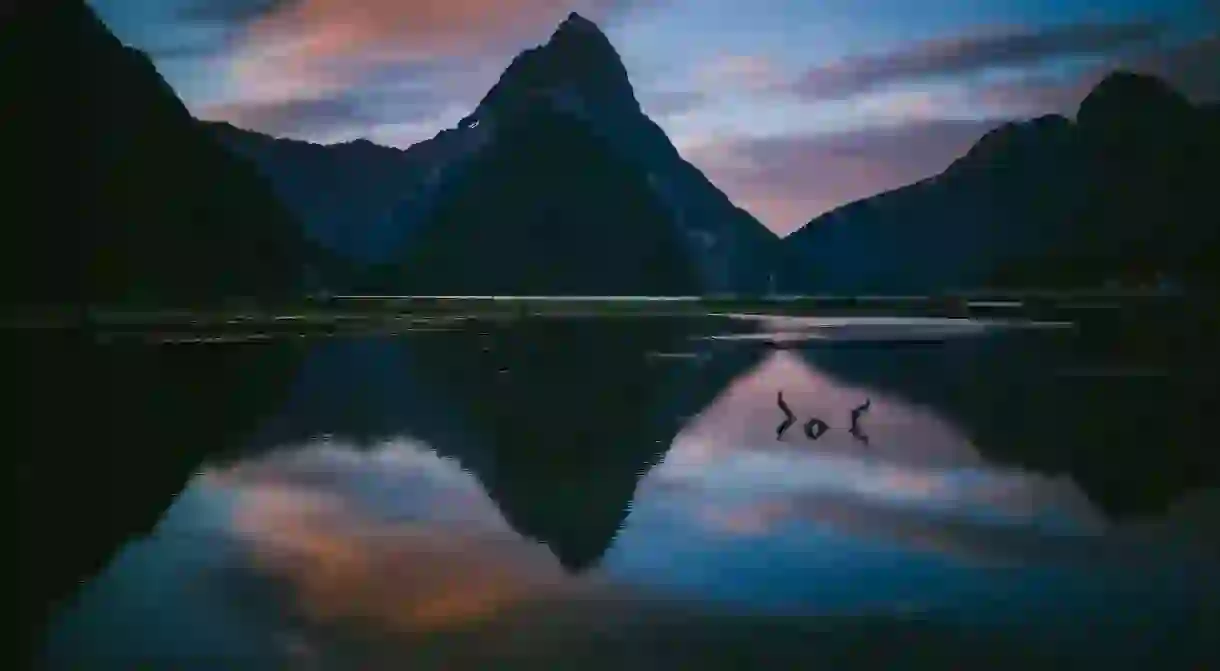11 Awesome Facts About Milford Sound, New Zealand

Milford Sound is one of the top attractions of New Zealand’s Fiordland National Park. Its extraordinary beauty captivates visitors from the world over, though remoteness is a strong part of its appeal too. If you’re itching to delve into these stunning horizons, here are some awesome facts that are sure to pique your interest.
Milford Sound is actually a fiord
Early European settlers named the area for its geographic features, but they made a mistake in doing so. A sound is formed when a river valley gets flooded by the sea. But Milford Sound was carved out of glacial erosion – thus making it a fiord, not a sound.

It is also the only fiord in New Zealand to be accessible by road
Road access to Milford Sound, however, took several years to become a reality. In 1889 William Henry Homer was one of the first people to survey the area where the road was built. At the time, he suggested that a tunnel going through the mountains would be the best way to provide road access to Milford Sound. Construction for this tunnel began much later, in 1935, when the government sent a team of relief workers to get things underway. The Homer Tunnel was completed 19 years later, in 1954.
Piopiotahi is the Māori name for Milford Sound
Piopiotahi means ‘one single piopio’, in reference to a native bird that is long extinct. It is believed that when the legendary Maui died during his pursuit of immortality for mankind, a single piopio flew by Milford Sound in mourning.

John Grono was the first European to visit Milford Sound
It is said that Milford Sound’s entrance was so well-hidden that Captain Cook passed through it twice. It was only in 1823, when a sealer called John Grono traversed the narrow fiord waterways, that the area caught the attention of European settlers. Grono named Milford Sound after a long and narrow inlet on the Welsh coast known as the Milford Haven.
Māori people started exploring the area several thousand years ago
Māori tribes residing in the South Island would travel to the area to fish, hunt and collect some precious pounamu (greenstone jade). Their treks often started from the east and used many traditional pathways, including what we now know as the iconic Milford Track and its Mackinnon Pass.

Rudyard Kipling was among the area’s famous visitors
The British author went to Milford Sound in 1891 and famously declared that the fjord is ‘the eighth wonder of the world’. On his New Zealand visit, Kipling also passed through Dunedin and Auckland and wrote a short story inspired by his travels.
Milford Sound is part of a UNESCO World Heritage site
Fiordland National Park, where Milford Sound is situated, is one of the four national parks in the southwest of the South Island that make up Te Wāhipounamu World Heritage Area. Westland Tai Poutini, Aoraki/Mount Cook and Mount Aspiring are the others in the vicinity. Rocks, plants and animals that can be traced back to Gondwanaland some 80 million years ago are among the features that earned the region its UNESCO heritage status.
It is one of the wettest places in the world
The South Island’s West Coast region is notorious for its high rainfall periods. Milford Sound goes one step further than that by being the wettest inhabited place in New Zealand, as well as one of the wettest places in the world. The area gets an average of 182 days of rainfall a year – over the course of 24 hours, this often means 250 millimetres (9.84 inches) of water pouring out of the skies. Not that this is a bad thing. Quite the contrary, it’s the heavy bouts of rain that create the powerful waterfalls and lush rainforests that everyone knows and loves.

There is a Milford Sound Village – but it’s pretty small
While figures tend to fluctuate around the high tourist seasons, Milford Sound has a permanent population of around 120 residents. Most people who live there work in tourism and conservation. Because of its small size, there are no shops in Milford Sound, and definitely no mobile coverage; its limited facilities include a single accommodation provider (the Milford Lodge) and an information centre with a cafe.
The Lady Bowen Falls provides water and electricity to the village
Along with being Milford Sound’s tallest waterfall, the Lady Bowen Falls plays an important role in local operations. Sometimes, dry spells and heavy rainfall can lead to a few issues in water flow, leading to the occasional power outage. Heavy rainfall can also make this natural gem quadruple in size. For many, Lady Bowen’s breathtaking features tend to make up for the odd underflow and overflow issues.

A lot of wildlife call the area home
This includes 60 different species of bottlenose dolphins as well as native fur seals, penguins, blue ducks (also known as whio), and birds like takahe, kakapo, mohua (yellowhead) and kea. People often get to see these New Zealand critters during the Milford Sound Cruise, on a hike, kayaking, scuba diving or simply by visiting the local Underwater Observatory.














